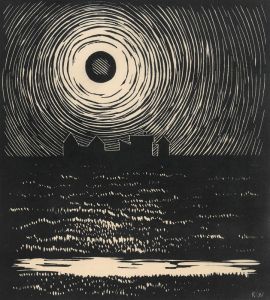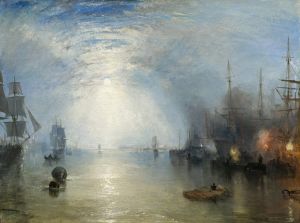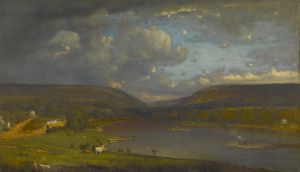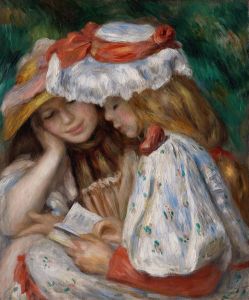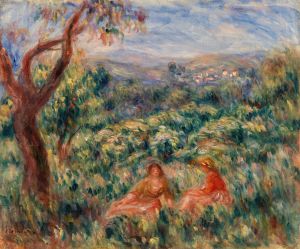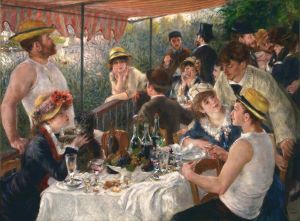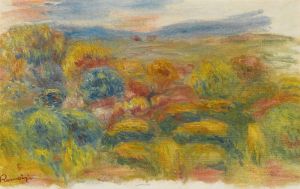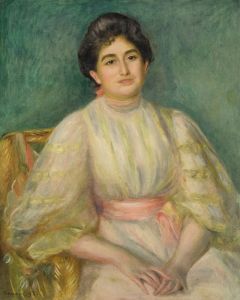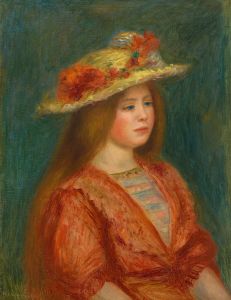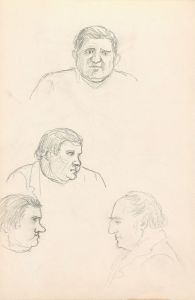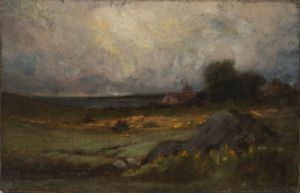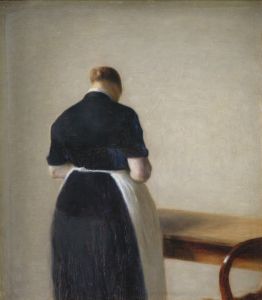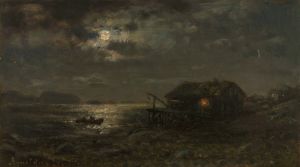
Landscape II
A hand-painted replica of Pierre-Auguste Renoir’s masterpiece Landscape II, meticulously crafted by professional artists to capture the true essence of the original. Each piece is created with museum-quality canvas and rare mineral pigments, carefully painted by experienced artists with delicate brushstrokes and rich, layered colors to perfectly recreate the texture of the original artwork. Unlike machine-printed reproductions, this hand-painted version brings the painting to life, infused with the artist’s emotions and skill in every stroke. Whether for personal collection or home decoration, it instantly elevates the artistic atmosphere of any space.
Pierre-Auguste Renoir, a leading figure in the Impressionist movement, is renowned for his vibrant light and saturated color, often focusing on people in intimate and candid compositions. However, he also created a number of landscapes throughout his career, which reflect his keen interest in capturing the natural world. One such work is "Landscape II," although specific details about this painting are not widely documented or discussed in art historical literature.
Renoir's landscapes are characterized by their loose brushwork and the artist's ability to capture the fleeting effects of light and atmosphere. His approach to landscapes was heavily influenced by his Impressionist contemporaries, such as Claude Monet, with whom he often painted en plein air. This method of painting outdoors allowed Renoir to observe and depict the natural environment directly, capturing the nuances of light and color that change throughout the day.
In his landscapes, Renoir often focused on the interplay of light and shadow, using a palette that was both vibrant and harmonious. He had a particular affinity for the lush greenery of the French countryside, which is a recurring theme in his landscape paintings. His works often depict serene and idyllic scenes, reflecting his appreciation for nature's beauty.
Renoir's landscapes, including "Landscape II," are noted for their sense of movement and life. The brushstrokes are typically fluid and dynamic, conveying the sense of a scene that is alive and constantly changing. This technique helps to immerse the viewer in the environment, creating a sense of immediacy and presence.
While specific information about "Landscape II" is limited, it can be inferred that the painting embodies the characteristics typical of Renoir's landscape works. These include a focus on natural beauty, a vibrant color palette, and a dynamic composition that captures the essence of the scene. Renoir's landscapes are less about detailed representation and more about conveying the mood and atmosphere of the moment.
Renoir's contribution to the Impressionist movement was significant, and his landscapes played a crucial role in his oeuvre. They demonstrate his ability to blend traditional artistic techniques with the innovative approaches of Impressionism, resulting in works that are both timeless and evocative. Despite the lack of specific information on "Landscape II," it can be appreciated within the broader context of Renoir's work and his enduring legacy in the world of art.





